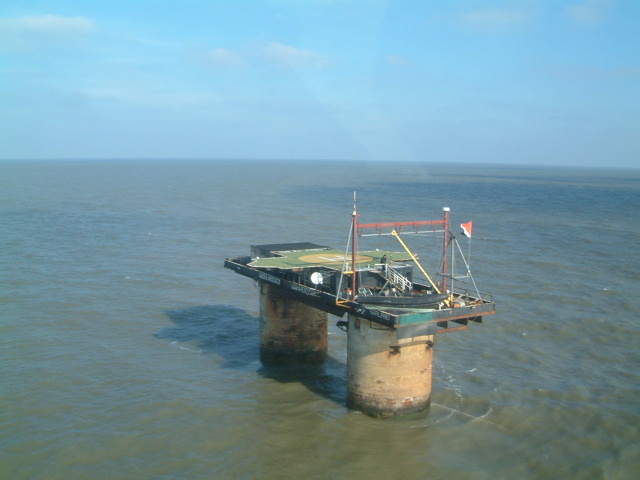Print Edition: February 29, 2012
There is no doubt the world is beginning to feel smaller and smaller. Gone are the days of expanding empires and colonization. They have faded into the distance. Here we have a new world where everything has been done – all wars have been fought, all lands discovered, and there is a real living sense that there is truly nothing new under the sun.
One maverick Englishman decided this was unacceptable.
It was a stormy night in 1967. Paddy Roy Bates, a former Major in the British Army, stole aboard an abandoned war structure eight miles off the coast of England and took it as his own. Years later, it would claim its place as a sovereign nation—the micronation of Sealand—and he would be its prince and de facto ruler.
Bates originally took the vessel to form a pirate radio station; pirate radio stations broadcasted from outside of British territorial waters in the ‘60s, often on ships. This was a way to circumvent harsh radio content restrictions that banned the broadcasting of pop and rock and roll music on British radio waves.
In 1967, Sealand might have appeared to onlookers like a pile of rusting scrap floating in the Thames estuary in England. The oil rig that was to become the Principality of Sealand was built in 1943 during World War II. Back then, it was known as Fort Roughs. Its original purpose was to serve as an artillery station to gun down Nazi planes and rockets. There were many of these stations scattered along the coast; they were known as the Maunsell Sea Forts, named after their designer Guy Maunsell. It was nothing more than an old 1940s-era oil rig that had long since been left to the ocean. Bates saw a unique opportunity – he saw destiny, freedom and independence, and he grasped it. He claimed it as his own, and because Fort Roughs lay outside British territorial waters there was not a thing the British could do about it.
The Sealand station itself is only 10,000 square feet large, most of its space devoted to two hollow cement cylinders which extend deep underwater. The large artillery guns on the platform have long since been done away with to make room for other projects – but that has not stopped Prince Roy from getting into skirmishes with the Royal Navy, who on a number of occasions have made uninvited excursions into Sealand’s territorial waters.
Since 1967, Bates and his family have occupied Sealand. It has drawn a lot of attention throughout the decades, and there have been several attempts to seize the structure. Despite its small size, it is coveted by many. Sealand has been witness to naval battles, legal battles, fires, and even the royal kidnapping and ransom of Bates’ son, Prince Michael, by German and Dutch mercenaries who wanted the nation for themselves. Luckily Prince Michael was released unharmed, and was returned to his family.
The Principality has managed to stay afloat financially by selling aristocratic titles such as “Lord,” “Lady,” and “Baron” to those who would like to have something fancy to boast about at dinner parties. The Principality also plays host to many different Internet groups who operate on Sealand by having their servers based on it, as a means to circumvent laws and restrictions they might encounter in their home nations.
Currently Prince Roy has retired his leadership role. He is old now, and after a long life of constant adventure, resides in the United Kingdom. He is succeeded by his son, his highness Prince Michael, who has been kind enough to grant The Cascade an interview. (See opposite page.)
It’s unfortunate, but to this date no nation has ever officially recognized the Principality of Sealand in any capacity. Prince Roy claims, however, that when Germany sent a diplomat to retrieve a citizen of Germany—one of Prince Michael’s kidnappers—that the retrieval of this citizen constituted de facto recognition of Sealand. Bates also made a similar claim when he was summoned to court in Britain (regarding a firearms skirmish with the Royal Navy), that it was also in effect official recognition of Sealand by the United Kingdom.
Sealand’s story is a story about rebellion and independence. The tiny micronation has seen it all. As Fort Roughs, the craft fought the Nazi menace terrorizing England and the rest of Europe. Next it rebelled against the BBC’s domination of the radiowaves in the UK, and finally, in 1967, it became a sovereign nation rebelling against England itself.
Its story is one about hope – hope in an age where everything has been taken and where everything has been done. Sealand stands as a way of telling humanity that, just maybe, if you were to cast your gaze upon the horizon at dawn at the right time and with the right eyes, you might find something new – something different. Perhaps one might even find the thing that so many of us scour the earth for, but so very few of us ever find – a Plymouth Rock of one’s own.


